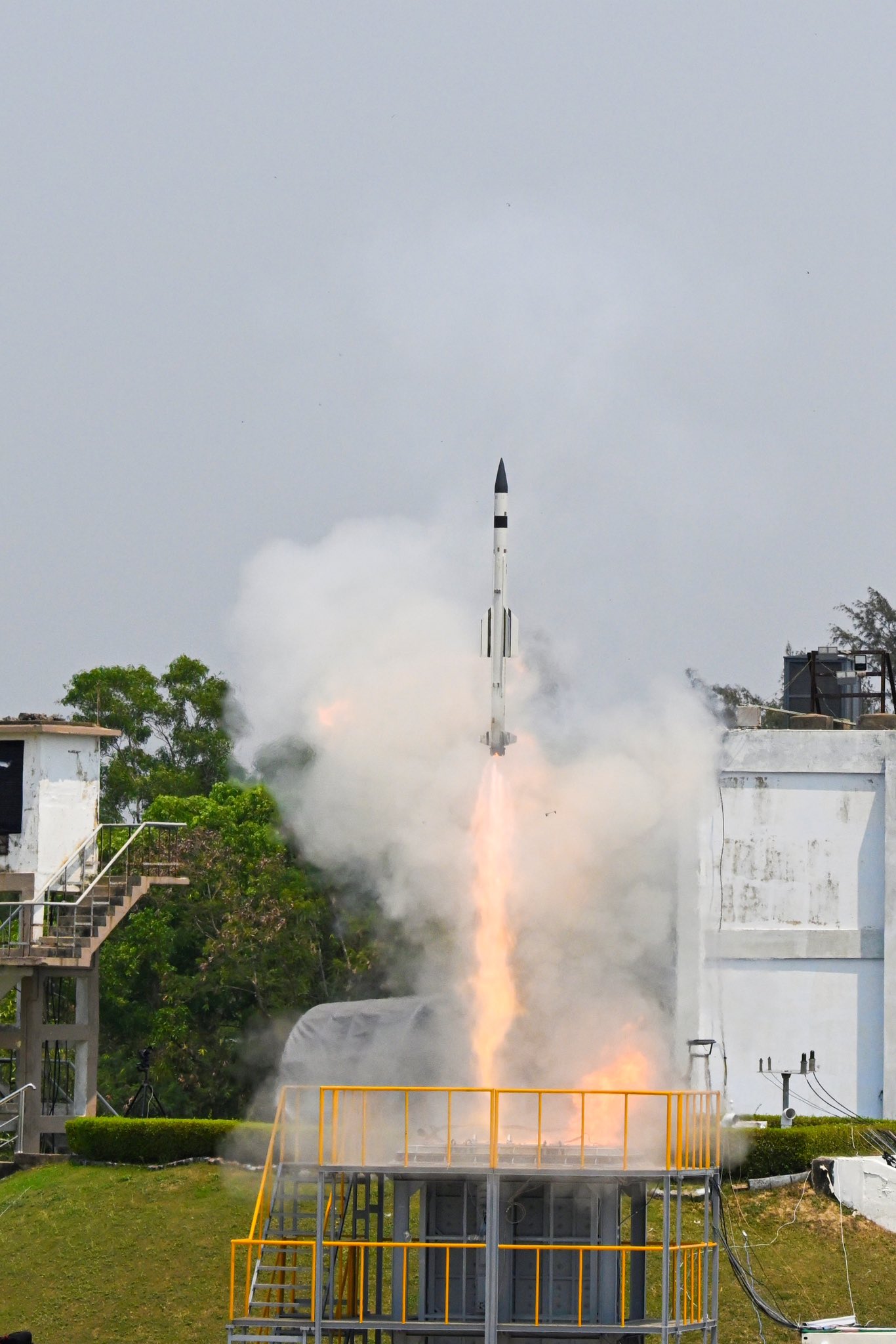India Successfully Tests Indigenous VLSRSAM, Boosting Naval Air Defence Might
The VLSRSAM is specifically designed to neutralize close-range aerial threats, and the successful trial has now validated its operational readiness.

- Country:
- India
In a major milestone for India’s defence capabilities, the Defence Research & Development Organisation (DRDO) and the Indian Navy successfully conducted the flight test of the indigenously developed Vertically-Launched Short-Range Surface-to-Air Missile (VLSRSAM) on March 26, 2025. The launch took place around 1200 hours from the Integrated Test Range (ITR) in Chandipur, Odisha, marking a crucial achievement in India's pursuit of self-reliant and advanced missile defence systems.
A Critical Step in Air Defence
The VLSRSAM is specifically designed to neutralize close-range aerial threats, and the successful trial has now validated its operational readiness. During this landmark test, the missile was fired from a land-based vertical launcher, targeting a high-speed aerial object flying at low altitude and in very close proximity—conditions that simulate real-world combat engagements for naval vessels.
Despite the high complexity of such a mission profile, the missile demonstrated exceptional agility, executing the necessary high turn rates to intercept and destroy the target with pinpoint precision. This has officially established the missile’s Near-Boundary-Low Altitude (NBLA) engagement capability—a key requirement for modern naval warfare.
Advanced Indigenous Technologies
All components of the VLSRSAM system performed to expectations during the test. The missile system is a product of cutting-edge Indian technology and includes:
-
Indigenous Radio Frequency (RF) Seeker: This enables precise tracking and engagement of targets in a cluttered signal environment.
-
Multi-Function Radar (MFR): Offers target detection, tracking, and fire control.
-
Weapon Control System (WCS): Integrates all mission elements for coordinated action.
These elements were deployed in a full combat configuration during the trial, adding real-world relevance to the validation. The successful test underscores the reliability, responsiveness, and effectiveness of the missile system under tactical conditions.
Data-Driven Validation
Flight data collected by advanced range instrumentation—developed by the ITR itself—confirmed the successful interception and destruction of the target. These data points are critical for performance assessment and future refinement of the system. The ITR’s contribution, through its indigenously developed tracking and analysis systems, highlights the synergy between various DRDO establishments.
Leadership Applause
Defence Minister Shri Rajnath Singh lauded DRDO, the Indian Navy, and the Indian defence manufacturing ecosystem for this successful flight test. He emphasized that the VLSRSAM system is “proof of India’s strong design and development capabilities in defence R&D” and hailed it as a “force multiplier” for the Indian Navy, which is constantly evolving to meet dynamic maritime threats.
Dr. Samir V Kamat, Secretary of the Department of Defence R&D and Chairman of DRDO, echoed these sentiments. He praised the collaborative effort between DRDO scientists, Navy personnel, and industry partners. He further noted that the successful validation of the missile, armed with modern technologies, will provide a strategic edge to the Indian Armed Forces and accelerate the indigenous development of next-generation defence systems.
Strategic Significance
The VLSRSAM is poised to become a critical component of naval defence onboard frontline warships, particularly in the face of increasing threats from hostile aircraft, drones, and precision-guided munitions. Its vertical launch capability allows for seamless integration into shipborne vertical launching systems (VLS), conserving space while maximizing tactical responsiveness.
India’s focus on developing indigenous weapon systems has gained momentum under the “Aatmanirbhar Bharat” initiative, and successful demonstrations like this one solidify India’s reputation as a competent and capable defence technology innovator.
As India looks to safeguard its maritime interests in an increasingly complex Indo-Pacific region, technologies like the VLSRSAM will play a crucial role in enhancing its deterrence and operational readiness.










